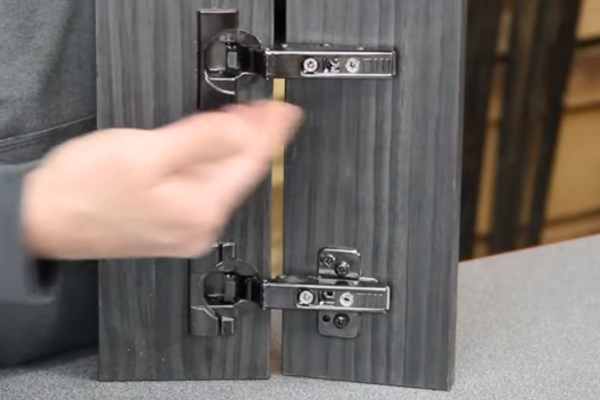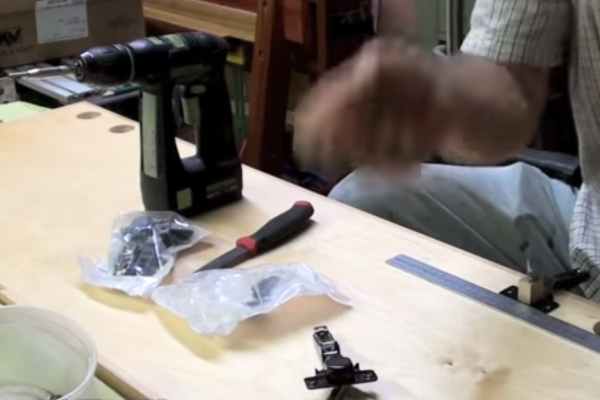Welcome to this informative article on how to adjust cabinet hinges. Cabinet hinges are essential hardware components that facilitate the smooth and efficient operation of cabinet doors. They come in various types And sizes, Each with specific functions And features. Properly adjusted cabinet hinges are critical for the longevity and performance of your cabinets, as they ensure that the doors open and close correctly without binding, sagging or rubbing against the frame.
In this article, We will provide you with net hinges and highlight their importance in maintaining the functionality And aesthetics Of your cabinets. We will then delve into the various methods Of adjusting cabinets hinge, including the tools required and step by step instructions on how To make the necessary adjustments.
What Is Cabinet Hinges Adjusting?

Cabinet hinge adjusting is an essential maintenance task that can prevent many problems associated with cabinet doors. A cabinet door that is out of alignment can cause the door to rub against the frame, leading to premature wear and tear. It can also cause the door to sag Or bind, Making it difficult to open Or close. Adjust cabinet hinges can correct these issues and restore the smooth operation of the cabinet doors.
The process Of adjusting cabinets hinge may vary depending on the type Of hinge and the degree Of misalignment. However, It typically involves loosening the screws that hold the hinge in place And making slight adjustments to the hinge position, tension, Or depth. With the right tools and a little patience, anyone can learn how to adjust cabinet hinges and keep their cabinets functioning properly for years to come.
The Benefit Of Cabinet Hinges Adjusting
Adjusting cabinet hinges provides numerous benefits, such as:
- Ensuring smooth and efficient operation of cabinet doors
- Preventing wear and tear on the cabinet doors and frame.
- Reducing noise and vibration caused by rubbing or binding doors
- Improving the appearance of the cabinets by ensuring that the doors align correctly with the frame
- Preventing damage to adjacent surfaces and walls caused by doors that swing too far open or shut
- Enhancing the security of your cabinets by ensuring that the doors close tightly and securely
Adjusting cabinet hinges is a simple yet crucial maintenance task that can significantly improve the functionality and longevity of your cabinets while enhancing their appearance and security.
Types Of Cabinet Hinges
Concealed Hinges:

Definition and Characteristics:
- Concealed hinge, Also known As European hinges, Are A type of cabinet hinge that is hidden from view when the cabinet door is closed. They are install on the inside Of the cabinet door and frame, Providing A clean and modern look to the cabinet. However, Concealed hinges are available in different styles and configurations, With varying degrees of adjustability and soft-close features.
Benefits and Drawbacks:
- The benefits of concealed hinge include:
- A clean and modern look, as the hinge is not visible from the outside
- Increased adjustability, as most concealed hinge have multiple adjustment points for precise alignment
- Soft-close features, which prevent slamming and reduce noise
- Easy installation, as concealed hinges can be installed without drilling visible holes in the cabinet frame
The drawbacks of concealed hinges include:
- Higher cost, as concealed hinges are more expensive than traditional hinges
- Limited weight capacity, as concealed hinges may not support heavy or oversized doors
- Require more precision during installation, as the hinge must be precisely aligned to function correctly
Adjustment Process:
- Additionally, The adjustment process for concealed hinges involves loosening the hinge mounting plate screws, adjusting the depth, height, and lateral position of the hinge cup, and tightening the screws back into place. Some concealed hinge may require specialized tools or adjustment clips to make precise adjustments. It is essential to follow the manufacturer’s instructions and make small adjustments until the door is correctly align and functions smoothly.
Surface-Mounted Hinges

Definition and Characteristics:
- Surface-mounted hinges are a type of cabinet hinge that is visible on the outside of the cabinet door and frame. They are attached to the face of the cabinet frame and the back of the door, with the hinge knuckle visible when the door is closed. Surface-mounted hinges are available in a variety of styles and finishes, with varying degrees of adjustability and weight capacity.
Benefits and Drawbacks:
- The benefits of surface-mounted hinges include:
- Lower cost, as they are less expensive than concealed hinges
- Higher weight capacity, as they can support heavier and larger cabinet doors
- Easy installation, as they do not require special tools or drilling into the cabinet frame
- Offered in various finishes, sizes, and styles to suit different cabinet designs
The drawbacks of surface-mounted hinges include:
- Visible hinges, which can detract from the overall appearance of the cabinet
- Limited adjustability, as they typically have fewer adjustment points than concealed hinges
- May produce noise and vibration when opening or closing
Adjustment Process:
- In this case, The adjustment process for surface mounted hinge involves loosening the screws that hold the hinge in place On the door And frame, making slight adjustments to the hinge position, And tightening the screws back into place. Surface mounted hinge may have some degree of adjustability in the form of slotted screw holes or adjustment screws, but the range of adjustment may be more limited than concealed hinges. It is crucial to make small adjustments until the door is correctly aligned and functions smoothly.
Tools Needed For Adjusting Cabinet Hinges

Screwdrivers:
- Screwdrivers Are essential tools for adjust cabinet hinges, As they are use to tighten Or loosen the screws that hold the hinge in place. A set Of screwdrivers with different sizes and types of tips, Such as Phillips, flathead, Or Torx, is recommend.
Drill:
- A drill may be necessary for adjusting concealed hinges or installing new hinges. A drill with a suitable drill bit can be use to create holes for the hinge screws or to drill new holes in the cabinet frame.
Screws:
- New screws may be necessary for adjusting cabinets hinge, especially if the existing screws are damaged or worn. It is essential to choose the correct size and type of screw for the hinge and cabinet material.
Hinge Adjustment Tools:
- Some types of hinges, such as concealed hinge, may require specialized adjustment tools to make precise adjustments to the hinge position. These tools may include adjustment clips, depth stops, or hinge mounting plates.
Cabinet Hinges Adjustment

Identify The Problem:
- Before attempting to adjust cabinet hinges, it is essential to identify the problem that needs to be addressed. Common problems include doors that are not level, doors that do not close properly, or doors that sag or rub against the cabinet frame.
Adjust The Height:
- If the cabinet door is not level, It may be necessary to adjust the height Of the grip. To Do this, loosen the screws that hold the hinge to the cabinet frame or door, And adjust the hinge up Or down until the door is level. Tighten the screws to hold the hinge in place.
Adjust The Depth:
- If the cabinet door is rubbing against the cabinet frame, It may Be necessary to adjust the depth of the hinge. To do this, Loosen the screws that hold the hinge cup to the door Or the mounting plate to the cabinet frame, And adjust the depth Of the grip cup in Or out until the door no longer rubs against the frame. Tighten the screws to hold the hinge in place.
The Side-To-Side Position:
- If the cabinet door is not properly align with the cabinet frame, It may be necessary to adjust the side to side position Of the hinge. To do this, Loosen the screws that hold the grip to the cabinet frame Or door, And adjust the hinge left Or right until the door is properly align with the frame. Tighten the screws To hold the hinge in place.
Adjust The Closing Speed:
- Some cabinets hinge have A soft close feature that controls the speed At which the door closes. If the door is closing too quickly or too slowly, It may be necessary to adjust the closing speed. To do this, Locate the adjustment screw on the grip And turn it clockwise to slow down the closing speed Or counterclockwise to speed up the closing speed.
Common Problems With Cabinet Hinges And Their Solutions

Cabinet Doors Won’t Close Properly:
- Cabinet doors that won’t close properly may Be cause by hinge that are misaligned Or not tightened properly. To fix this issue, Ensure that the hinge screws are securely tightened And that the grip is properly aligned with the cabinet frame.
Cabinet Doors Won’t Stay Closed:
- When cabinet doors won’t stay closed, It may be due to worn out Or damaged hinges. To solve this problem, Replace the grip with new ones Or adjust the closing speed Of the hinge to ensure that the door closes properly.
Doors Won’t Open Properly:
- Cabinet doors that won’t open properly may Be caused by hinges that are too tight Or not properly aligned. In this case, To fix this, Check that the hinge screws Are not too tight And adjust the hinge position if necessary To ensure that the door opens smoothly.
Cabinet Doors Are Crooked Or Misaligned:
- If cabinet doors are crooked Or misaligned, It may Be due to grip that are not properly adjusted Or mounted. Use A level to ensure that the doors are level And adjust the hinges As necessary to ensure that the doors Are properly align.
Cabinet Hinges Are Loose Or Worn Out:
- Cabinets hinge that Are loose Or worn out should be replace with new ones. However, Use the appropriate tools To remove the old hinges and install new ones. Ensuring that they are properly aligned And tightened.
Regular Cleaning

Lubrication Cleaning:
- To keep cabinet hinges functioning properly, It is important to clean and lubricate them regularly. Use A damp cloth to remove any dirt or debris from the hinge, And then apply A small amount Of lubricant to the moving parts Of the hinge.
Tightening Loose Screws:
- Over time, The screws that hold the hinge in place can become loose, Which can cause the hinge to malfunction. However, Check the screws regularly And tighten them As needed to keep the hinge securely in place.
Replacing Worn-Out Hinges:
- If cabinet hinges Are worn out Or damaged beyond repair, It is important to replace them with new ones. This will ensure that the cabinet doors function properly And prevent any further damage to the hinge Or cabinet frame.
The Final Though
The ability to adjust cabinet hinges is A crucial skill that ensures cabinet doors function optimally. Additionally, This article has highlighted the importance of properly adjusted cabinet hinges, common problems that arise with hinges, and the necessary tools for adjustment.
Regular maintenance, such as lubrication cleaning, tightening loose screws. And replacing worn-out hinge, is essential for extending the lifespan of cabinet hinges. The significance of these adjustments is that they guarantee that cabinet doors align and function smoothly, ultimately preventing the need for costly replacements.
Additional resources, Such as online tutorials And instructional videos. Are available for those who want to learn more about adjusting cabinets hinge. However, By mastering the art Of adjusting cabinet hinge And consistently maintaining them, Cabinets can operate flawlessly for many years.
